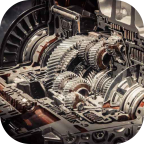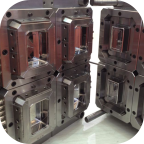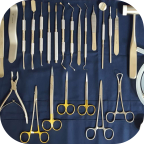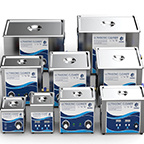Optimizing Electronic Component Cleaning with Ultrasonic Technology
Browse Volume:53 Classify:Support
The Importance of Precision Cleaning for Electronic Components
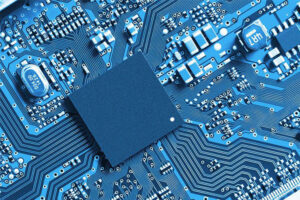
Electronic components are integral to modern devices, from smartphones to industrial machinery. Given their complexity and sensitivity, keeping these components clean is essential to maintain functionality and longevity. Contaminants such as dust, flux residues, and oils can compromise performance, leading to signal interference, short circuits, and device failures. Traditional cleaning methods, such as manual wiping and solvent cleaning, often fail to reach intricate crevices and delicate structures. This is where ultrasonic cleaning technology offers a superior solution, ensuring thorough and non-destructive cleaning for even the most delicate components.
How Ultrasonic Cleaning Works
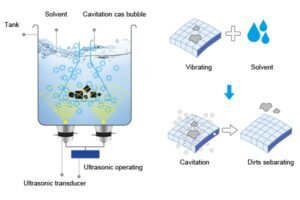
Ultrasonic cleaning is a highly effective process that uses high-frequency sound waves to remove contaminants from surfaces. It involves submerging electronic components in a cleaning solution and applying ultrasonic waves, typically ranging from 20 kHz to 80 kHz. These waves create microscopic cavitation bubbles that implode upon contact with contaminants, dislodging particles without causing damage to the components.
The key elements of ultrasonic cleaning include:
- Ultrasonic Transducers: These generate high-frequency sound waves within the cleaning tank.
- Cavitation Bubbles: The rapid formation and collapse of these bubbles effectively lift dirt and residues from surfaces.
- Cleaning Solution: Specialized cleaning agents enhance the process by breaking down oils, flux residues, and other contaminants.
This non-contact method ensures even the most intricate parts of an electronic component are cleaned without the risk of mechanical damage.
Benefits of Ultrasonic Cleaning for Electronics
Ultrasonic cleaning offers several advantages over traditional cleaning techniques, making it an ideal choice for electronic components.
- Deep Cleaning Capabilities
- Ultrasonic waves penetrate complex geometries, reaching blind holes, fine wires, and hidden cavities where contaminants often accumulate.
- Non-Destructive Cleaning
- Unlike abrasive scrubbing, ultrasonic cleaning is gentle on fragile components such as PCBs (printed circuit boards), sensors, and microchips.
- Efficiency and Time-Saving
- The process significantly reduces cleaning time compared to manual methods while providing more consistent results.
- Eco-Friendly Approach
- Since ultrasonic cleaning relies on sound waves and water-based solutions, it minimizes the need for harsh chemicals, reducing environmental impact.
- Removal of Flux Residues and Soldering Contaminants
- Electronic manufacturing involves soldering, which often leaves flux residues that can affect circuit performance. Ultrasonic cleaning effectively removes these residues without manual intervention.
Best Practices for Ultrasonic Cleaning of Electronic Components
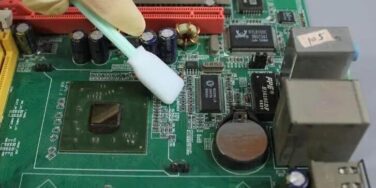
To achieve optimal results, following industry best practices is essential when using ultrasonic cleaning for electronic components.
1. Selecting the Right Frequency
- 20-40 kHz: Best for removing heavy contaminants but may be too aggressive for delicate electronics.
- 40-80 kHz: Ideal for fine, sensitive components like microchips and delicate circuitry.
- 100 kHz and above: Used for ultrafine cleaning of highly sensitive parts.
2. Choosing the Proper Cleaning Solution
- Water-based Solutions: Preferred for general electronic cleaning.
- Solvent-based Solutions: Necessary for stubborn contaminants but require careful handling to prevent damage.
- Deionized Water: Helps prevent mineral deposits and ensures residue-free drying.
3. Controlling Cleaning Time and Temperature
- Cleaning Duration: Typically ranges from 5 to 20 minutes, depending on contamination levels.
- Temperature Settings: Most effective between 40°C and 60°C, but overheating can damage sensitive components.
4. Implementing Proper Drying Techniques
- Air Drying: Using compressed air or vacuum drying to remove moisture without leaving water spots.
- Low-Temperature Ovens: Ensuring complete moisture removal for components with complex geometries.
Applications of Ultrasonic Cleaning in Electronics Industry
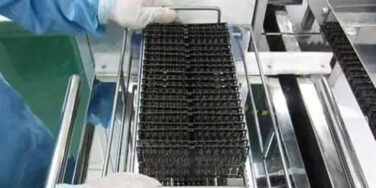
Ultrasonic cleaning technology is widely utilized in various sectors of the electronics industry, providing high-precision cleaning for different applications.
1. Printed Circuit Board (PCB) Cleaning
- Removes solder flux, dust, and oxidation without damaging solder joints.
- Enhances conductivity and performance of circuit boards.
2. Semiconductor and Microchip Cleaning
- Ensures optimal functionality of microprocessors and integrated circuits.
- Removes microscopic debris that can cause electrical failures.
3. Optical and Sensor Cleaning
- Used in cleaning fiber optics, camera sensors, and laser components.
- Ensures precision and clarity for high-performance optical devices.
4. Aerospace and Automotive Electronics Maintenance
- Cleans control modules, circuit assemblies, and avionics components.
- Prevents corrosion and enhances longevity in critical applications.
Advancements and Future Trends in Ultrasonic Cleaning
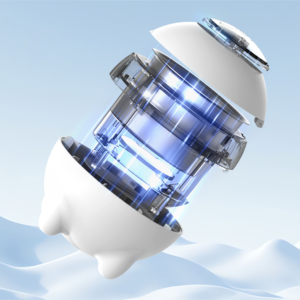
The field of ultrasonic cleaning continues to evolve, with emerging trends enhancing efficiency and effectiveness.
1. Automated Ultrasonic Cleaning Systems
- Integration with robotics for fully automated cleaning lines in manufacturing plants.
- Reduces human error and increases consistency in mass production.
2. Nanotechnology-Enhanced Cleaning Solutions
- Development of nano-coatings that repel contaminants post-cleaning.
- Enhances the durability of electronic components against environmental factors.
3. Eco-Friendly and Sustainable Solutions
- Transition toward biodegradable and non-toxic cleaning agents.
- Adoption of energy-efficient ultrasonic cleaning systems to reduce carbon footprint.
With the rapid advancement of electronics, ensuring the highest level of cleanliness is paramount. Ultrasonic cleaning continues to be a game-changer, providing precision, efficiency, and sustainability for the future of electronic component maintenance.
References
- Busnaina, A. A. (2021). Nanoparticle Technology for Electronic Component Cleaning. Wiley.
- Ohl, C. D., & Lauterborn, W. (2020). “Cavitation Dynamics in Ultrasonic Cleaning Applications,” Journal of Applied Physics, 128(5), 5503-5520.
- Nguyen, Q. H., & Lee, J. H. (2023). “Advancements in Ultrasonic Cleaning for Microelectronics,” IEEE Transactions on Components and Packaging Technologies, 46(7), 1234-1248.
- Chen, Y., & Zhang, L. (2022). “Eco-Friendly Cleaning Solutions in Ultrasonic Systems,” Materials Science and Engineering B, 285(3), 105643.
- Tanaka, K. (2019). “Ultrasonic Cleaning and Its Role in Precision Electronics Manufacturing,” Journal of Semiconductor Technology and Science, 19(2), 197-210.
 GranboUltrasonic
GranboUltrasonic

